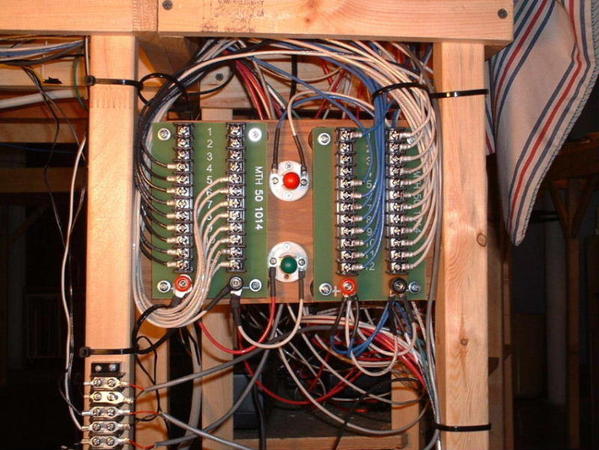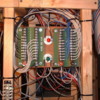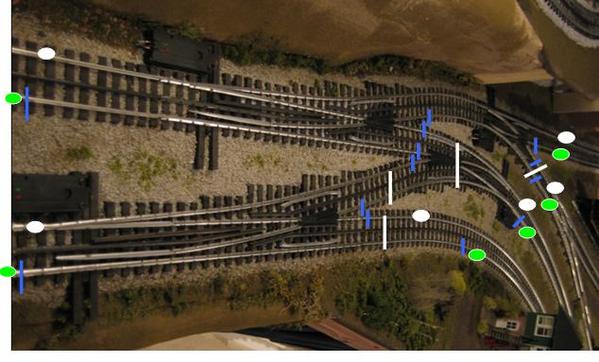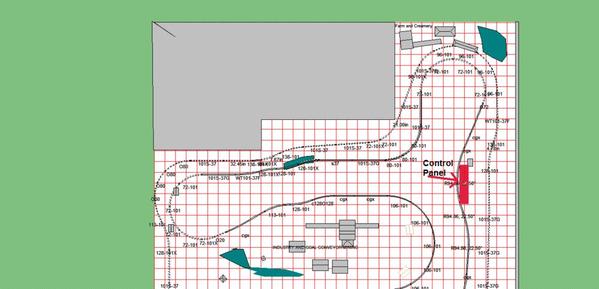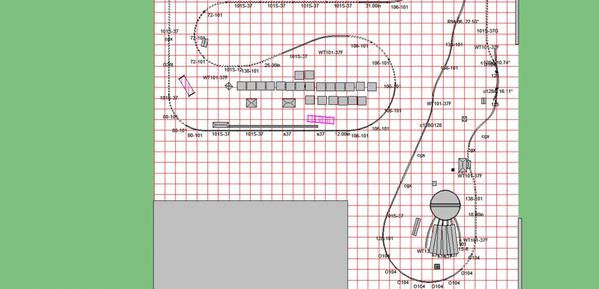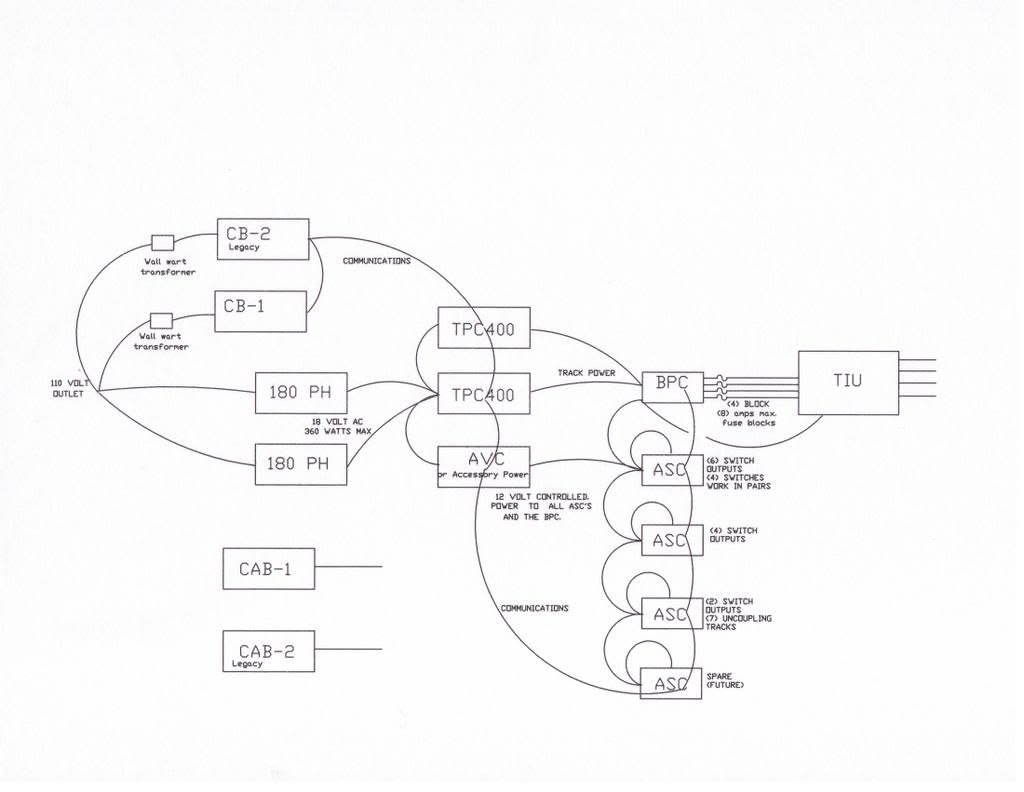
Two(TPC's)(Track Power Controllers) can be wired to the input of a BPC (Block Power Controller) which allows the (TPC's) and either/or for the (4) BPC output power districts.
There is a detail for (4) TPC to (2) Power districts. Same equipment.
Older IC Controls BPC's Lionel BPC's have slightly different commands.
Acc#1, Aux1 Connects TPC#1 to Block #1 output of the BPC
Acc#1, Aux2 Connects TPC#2 to Block #1 output of the BPC
Acc#2, Aux1 Connects TPC#1 to Block #2 output of the BPC
Acc#2, Aux2 Connects TPC#2 to Block #2 output of the BPC
Acc#3, Aux1 Connects TPC#1 to Block #3 output of the BPC
Acc#3, Aux2 Connects TPC#2 to Block #3 output of the BPC
Acc#4, Aux1 Connects TPC#1 to Block #4 output of the BPC
Acc#4, Aux2 Connects TPC#2 to Block #4 output of the BPC
IC Controls BPC's (Block Power Controllers) lower right of large accessory transformer upper left.

(2) IC Controls Block Power Controllers fed from the (2) silver Box Track Power Controllers pictured. (8) Power districts.

You may want to install the TIU in passive mode. DCS and TMCC may work better in passive mode/or not. I'll let Barry explain that.
That should give you a Choice (Either/or, but not both at the same time) of (2) TPC's for (1) TIU Channel. There is a detail for (4) TPC's to (1) TIU Channel as I mentioned.
Best wishes on your project.
Mike.




